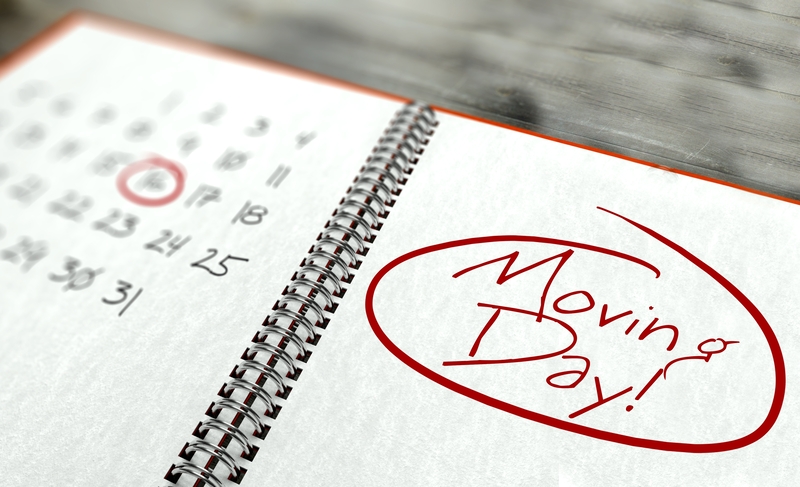How to Safely Transport Your Bed and Mattress to a New Home
Moving can be stressful, especially when it comes to transporting large furniture items like beds and mattresses. Ensuring these essentials arrive at your new home undamaged and clean is a top priority for most homeowners. In this comprehensive guide, we'll walk you through everything you need to know about how to safely transport your bed and mattress to a new home, offering practical tips, detailed steps, and expert advice.
Why Careful Bed and Mattress Transport Matters
Mattresses and beds are major investments--not only do they contribute to your comfort and health, but they're also expensive to replace. Improper handling during a move can result in:
- Tears or stains on your mattress fabric
- Bent or broken bed frames and slats
- Dirt, dust, or moisture damaging the mattress
- Loss of manufacturer warranties due to damage
Following the right steps for safe mattress transportation can save you money, effort, and backaches in your new house.

Planning Ahead: Steps Before Moving Day
1. Take Measurements
Before moving your bed and mattress, measure doorways, staircases, and hallways in both your old and new homes. This ensures you'll be able to maneuver them without damaging walls or your furniture.
- Record the dimensions of your bed frame and mattress
- Measure tight corners and door frames
- Plan alternate routes if needed
2. Gather the Right Supplies
- Mattress bags or covers: To protect against dirt, stains, and moisture
- Moving blankets: For added cushioning
- Packaging tape: Heavy-duty to secure covers and moving blankets
- Allen wrenches or screwdrivers: For disassembling bed frames
- Plastic bags and labels: To store and organize hardware
- Rope or ratchet straps: For securing items in the moving truck
Having the proper tools handy can help with stress-free bed and mattress relocation.
3. Clean and Prepare Your Mattress & Bed
- Vacuum your mattress to remove dust or allergens
- Wipe down the bed frame and slats
- Allow everything to dry completely
This step prevents transferring dirt or moisture to your new home--and can help you spot any problems before you move.
Disassembling Your Bed Frame: Step-by-Step Instructions
Most bed frames are designed to be taken apart. Disassembling your bed frame makes it far easier to transport and reduces the risk of breakage. Here's how:
- Remove linens and bedding from your mattress and box spring.
- Take off the mattress and box spring and place them in protective covers or bags.
- Remove slats or supports if your bed frame has them.
- Unscrew headboard, footboard, and frame components.
- Place all screws, bolts, and small parts in a labeled plastic bag and tape it to the headboard or another frame part.
- Wrap wooden or metal parts in moving blankets to prevent scratches.
For platform beds, adjustable frames, or beds with drawers, consult your manufacturer's manual for specific disassembly tips.
How to Safely Move Your Mattress
1. Cover the Mattress
Always use a mattress bag or cover before moving your mattress. These are available at moving supply stores and protect your mattress from:
- Dirt
- Moisture
- Stains or accidental tears
For extra protection during long-distance moves or in rainy weather, double-bag your mattress or wrap it in a heavy-duty moving blanket.
2. Safely Lifting Your Mattress
Mattresses are surprisingly heavy and unwieldy. To avoid injury or damage, always use proper lifting techniques:
- Bend your knees, not your back.
- Team up--mattresses are best moved by two people.
- Use mattress carry straps if possible.
3. Moving the Mattress Out of Your Home
Navigate tight corners and doorways with care. Memory foam and hybrid mattresses are more flexible but can be damaged by excessive bending; avoid folding or rolling unless the manufacturer explicitly recommends it.
The Best Way to Transport Mattresses in a Vehicle
Whether you're using a moving truck, pickup truck, or even a large SUV, follow these guidelines for safe mattress transport:
- Lay the mattress flat in your vehicle to prevent warping (especially important for innerspring or memory foam mattresses).
- Never tie a mattress to the roof of a car--this is unsafe and can result in fines or serious accidents.
- Use tie-down straps or rope to secure the mattress and prevent shifting during transit.
- Protect the mattress from sharp objects or edges by padding with blankets or cardboard.
- If standing upright, secure it between flat surfaces to avoid tipping.
Properly securing your mattress during a move ensures it arrives in the same condition it left.
How to Move a Bed Frame Safely and Efficiently
- Wrap each disassembled part in moving blankets or bubble wrap to prevent scratches.
- For wooden frames, avoid stacking directly on hard or abrasive surfaces.
- Clearly label each part or keep assembly instructions for quick reassembly at your new home.
- For large or heavy headboards, consider help from professional movers or friends.
Moving adjustable or motorized beds? Disconnect the power supply and secure loose cords to avoid damage.
Transporting Your Mattress Long-Distance vs. Locally
Local Moves
- Shorter distances mean less exposure to elements, but your mattress still needs protection from dirt and sharp objects.
- Transport mattress flat in a van or truck; avoid folds or extreme angles.
Long-Distance or Cross-Country Moves
- Double-wrap mattresses with protective plastic and moving blankets.
- Store on top of other boxes or furniture--never underneath heavy objects.
- If using professional movers, clearly label your mattress and box spring for special handling.
For interstate moves, check if your moving company covers mattress or furniture damage as part of their insurance options.
Common Mistakes to Avoid During Bed and Mattress Transportation
- Dragging mattresses on the ground, causing tears or dirt stains
- Storing mattresses on their sides for too long, leading to loss of shape (especially foam mattresses)
- Forgetting to secure mattress or bed frame in the moving vehicle
- Not protecting bed frames, resulting in chips or dents
- Losing screws or hardware by not storing them properly
Being proactive and prepared is your best defense against these moving mishaps.
Reassembling Your Bed in Your New Home
Once you arrive at your new place, it's tempting to just throw everything together. Take the time to:
- Reassemble your bed frame carefully, following any manufacturer instructions.
- Ensure all joints, screws, and connections are tight and secure.
- Wipe down the frame and mattress again before use, especially if stored for several days.
- Check for missing pieces--your labeled hardware bag will save frustration here!
- Allow your mattress to air out for several hours if wrapped in plastic.
Should You Hire Professional Movers for Your Bed and Mattress?
While DIY bed and mattress moves are possible, there are benefits to hiring professionals:
- They have experience with large, heavy, or delicate items
- Professional tools and materials safeguard your possessions
- They're insured against transport mishaps
- Save time and energy on moving day
If your bed is especially valuable, large, or has complex assembly, hiring experienced movers is often a wise investment.
Mattress Moving FAQs
- Q: Can I roll or fold a mattress for moving?
A: Only if the manufacturer says it's safe! Most memory foam mattresses can be temporarily rolled, but innerspring mattresses should never be folded as this can break the springs. - Q: How do I keep my mattress clean during a move?
A: Always use a waterproof mattress bag or double-wrap with plastic, then cover with a moving blanket for maximum protection. - Q: How heavy are mattresses and bed frames?
A: Mattresses weigh between 40-150 lbs depending on size and material; frames can range from 30-100 lbs (or more) and may require two people to carry. - Q: Is it safe to tie a mattress to the roof of a car?
A: Absolutely not! This is unsafe and can be illegal in many areas. Always use a suitable moving vehicle. - Q: How long can I safely store a mattress on its side?
A: Only for a few hours during transit. Extended storage on its side can lead to permanent damage, especially for foam or hybrid models.

Tips for a Stress-Free Bed and Mattress Move
- Enlist friends or family for help if going DIY
- Schedule your move during clear weather, if possible
- Keep assembly tools handy in your "essentials" moving box
- Plan your bedroom layout in advance for faster setup
Preparation and protection are key to safely transporting your mattress and bed to your new home.
Conclusion: Move Your Bed and Mattress Without the Stress
Relocating your bed and mattress doesn't have to be daunting. By planning ahead, following the practical tips above, and investing in the right supplies, you can ensure your sleep essentials arrive at your new home in pristine condition. Remember, whether you're moving across town or across the country, proper packing, lifting, and transportation are essential for keeping your mattress and bed frame safe.
If in doubt, don't hesitate to consult with professional movers, especially for heavy, bulky, or valuable items. With good preparation, you'll be ready to transport your bed and mattress safely--and enjoy a restful night's sleep in your new home.



